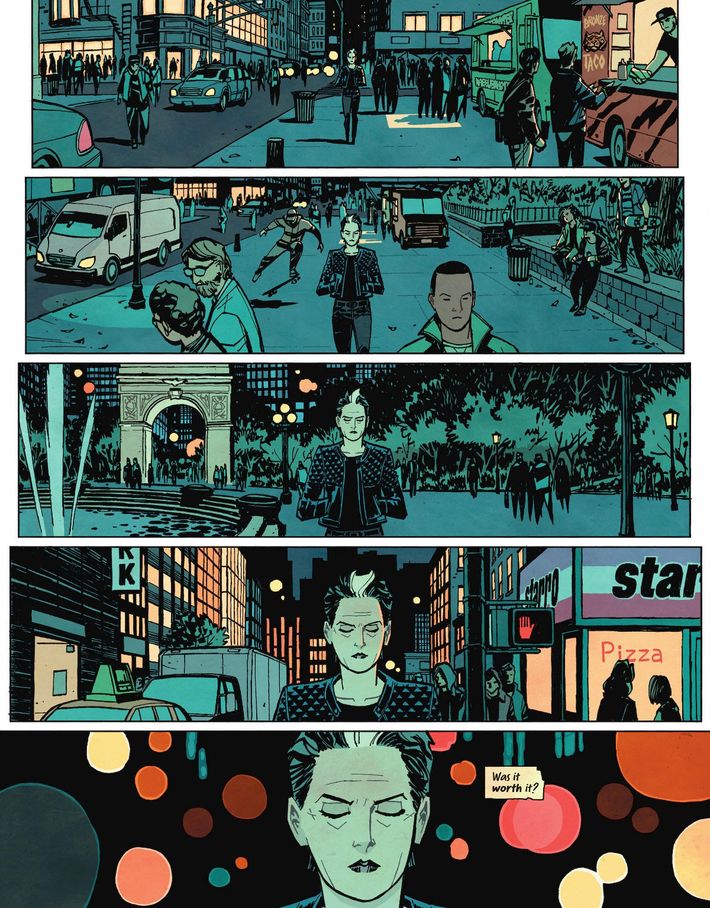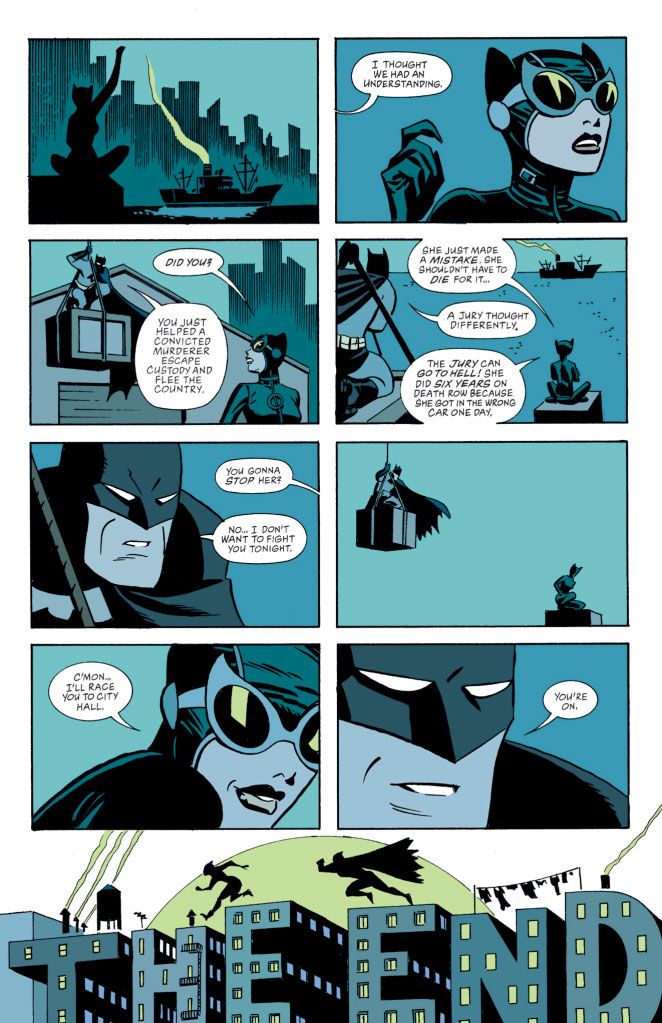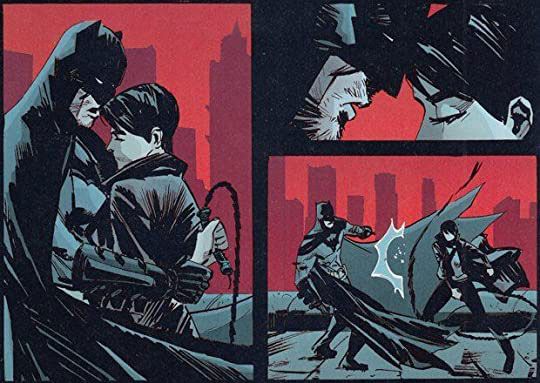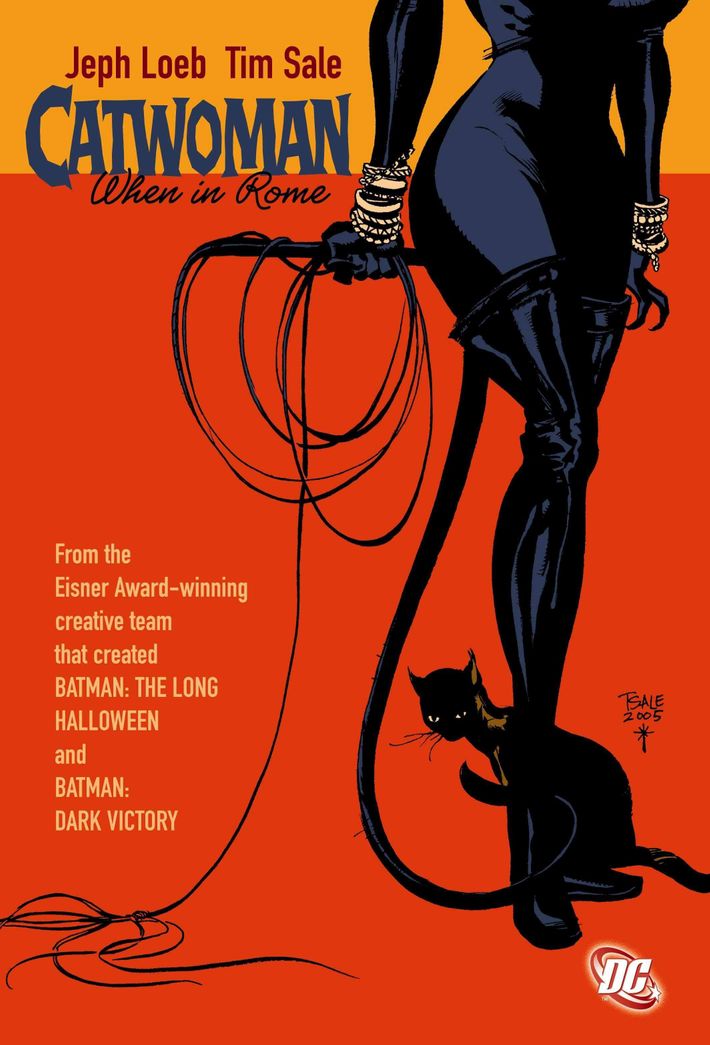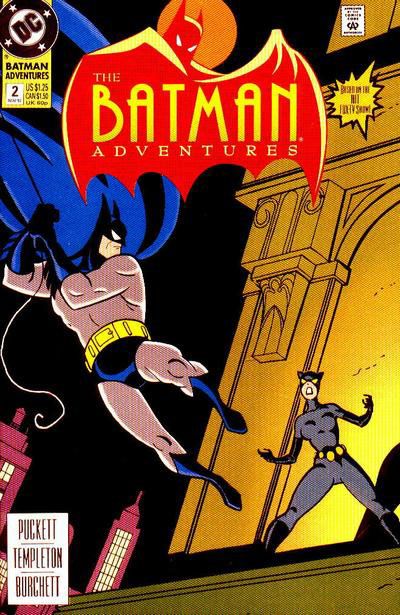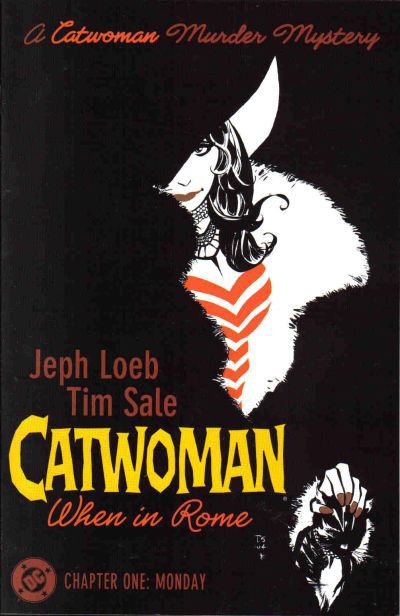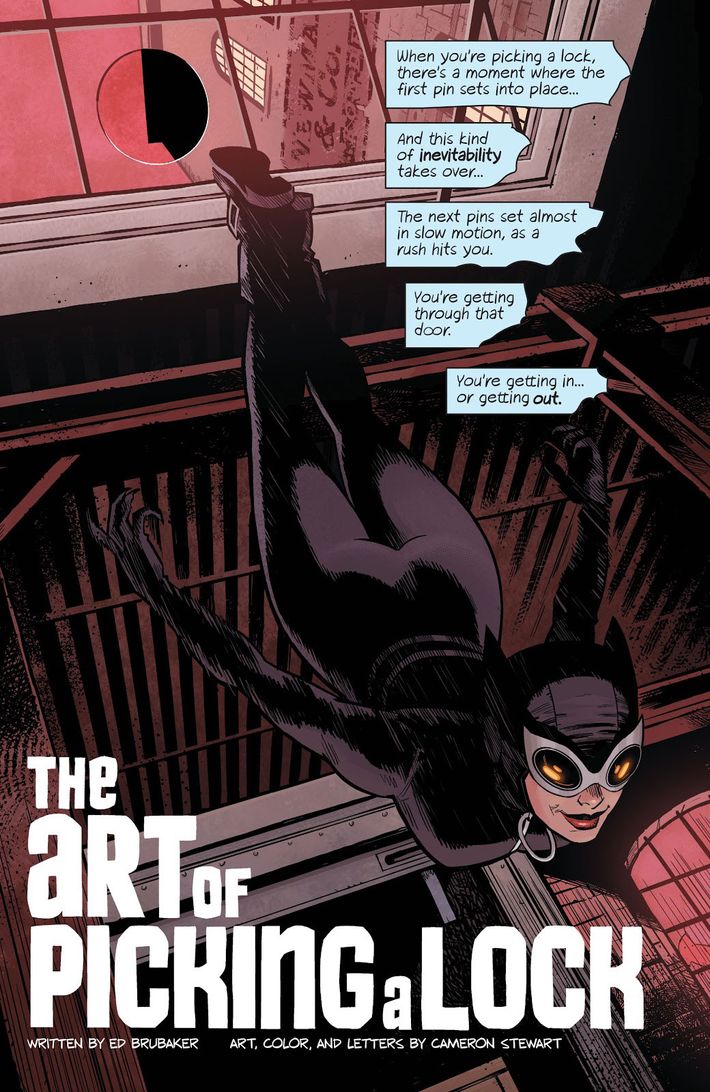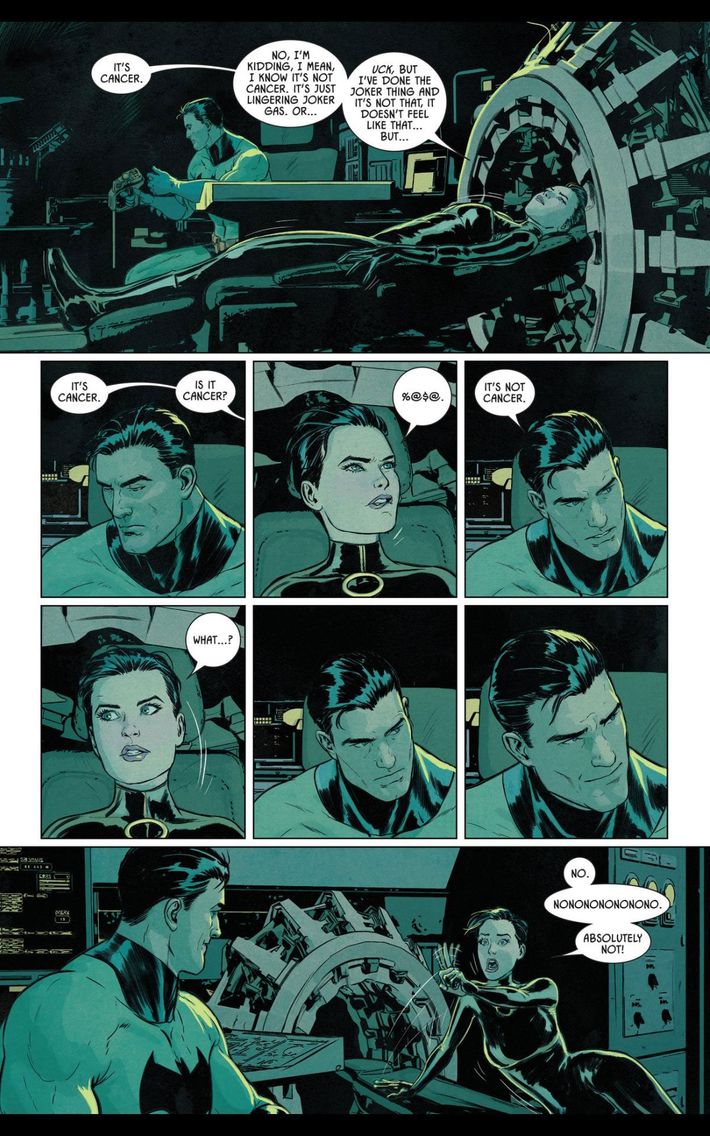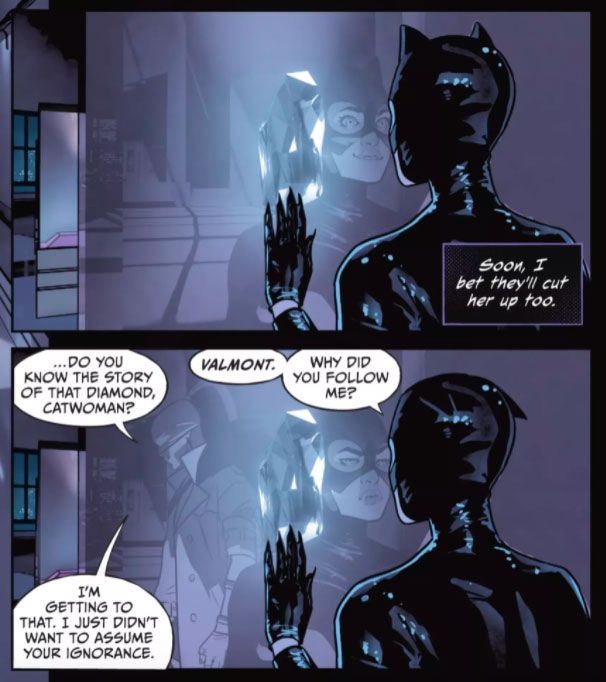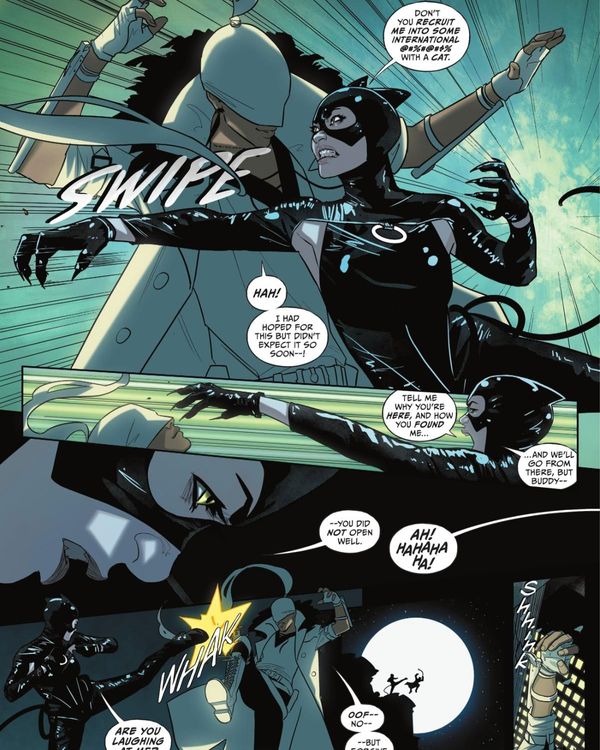
Ever since I started reading comics at 10 — in part inspired by Tim Burton’s Batman Returns — I have been drawn to Selina Kyle, more commonly known as Catwoman. Back then, I simply liked how bold she was and her penchant for cats. (Is Selina the hottest cat lady to exist in any medium?) But my appreciation for the character has been enriched by life and how she has grown in comics over the past three decades. Since premiering in the spring of 1940, decked out in an emerald dress in Batman’s first comic as a headliner after his initial appearances in Detective Comics in 1939, Catwoman has been a mercurial, thrilling creation defined by a fierce sense of self and belief in the power of pleasure — traits that are not always evident in her big-screen adaptations.
The best cinematic rendition of Catwoman is undoubtedly Michelle Pfeiffer, however, she isn’t so much an adaptation of the woman from the comics as she is a spinoff, twisting the character’s independence and sexiness into a patriarchal nightmare and BDSM aficionado’s greatest fantasy. But in co-writer-director Matt Reeves’s The Batman, we get a Catwoman who feels of the same tapestry as the comics. Zoë Kravitz’s Selina Kyle is cutting, scrappy, a phenomenal fighter, and a world-class thief. She is an orphan who cares for the people at the margins of Gotham; she feels of that city in ways no other cinematic Catwoman quite has, reflecting the mores of her hometown, where crime is tragic and justified. She is a development of the great femme-fatale archetype, with all the complexities of a full-fledged anti-hero: a slippery slate of ethics, an assured bravado, an ability to act as a warped mirror of our culture. Her origin story, like that of the Batman she plays against, is filled with obstacles and trauma that we can only expect to unfurl over subsequent films.
Until then, there is plenty of source material to keep you warm. If Kravitz’s Catwoman has piqued your interest in the depth and dynamism of one of DC’s most alluring iconoclasts, here are nine comic story lines for you:
Catwoman: Lonely City (2021–22)
Written, drawn, colored & lettered by Cliff Chiang
Who is Selina Kyle without Bruce Wayne in her life? Who is Catwoman without Batman at her heels? These are some of the questions driving Cliff Chiang’s marvelous DC Black Label four-issue Catwoman story, which is currently two issues in. Ten years ago, a devastating massacre known as Fool’s Night claimed the lives of the Joker, Nightwing, Commissioner Gordon, and, heartbreakingly, Batman himself. Even more heartbreaking? Selina was sent to prison. Now fresh out, Selina faces a far different Gotham than the one she left behind. The city is cleaner, safer, and without much freedom under the watchful eyes of Mayor Harvey Dent (who has left the identity of Two-Face behind) and his Batcops.
Selina hasn’t exactly been softened or hardened by time, but she has been complicated by it. Chiang puts a lot of melancholy and yearning into her characterization. No longer as spry, she relies on intelligence and cunning to propel her life forward. I appreciate the brief mention of her Latina heritage — she speaks Spanish with Eddie “the Riddler” Nygma’s daughter — which goes in and out of focus depending on the writer helming her. But just as important as its remixing of canon, its in-depth evolution of beloved characters (Killer Croc, Poison Ivy), and its bold take on Gotham’s future is Chiang’s astounding visual artistry. His use of color to bring to life Gotham’s night is especially inspired, showing deep purple, magenta, and cerulean skylines at crucial moments. One of the most disappointing aspects of the modern superhero boom is the continued misunderstanding of just how important the art is to making these characters and worlds continuously resonate.
Catwoman Vol. 1: Trail of the Catwoman,Vol. 2: No Easy Way Down, and Vol. 3: Under Pressure (2002–5)
Written by Darwyn Cooke and Ed Brubaker
Vol. 1 drawn by Darwyn Cooke, Cameron Stewart, and Mike Allred
Vol. 2 drawn by Cameron Stewart
Vol. 3 drawn by Paul Gulacy and Sean Phillips
This is the gold standard for a Catwoman story. Every one before or since is rightfully compared to the style, wit, characterization, and revelatory artistry of this series. It’s especially strong with Selina’s Big Score, which has a mod style, bold use of color, and cements a new stylishness for the character — with an Audrey Hepburn–esque cut and arguably the best revamp of her costuming, all black and leathered up. Even when Brubaker takes over writing duties without Darwyn Cooke for volumes two and three, the series situates Catwoman in her best context: as an avenging angel in noir-tinged capers.
The series is also globe-trotting — Morocco, Miami Beach, Las Vegas, and, of course, the grimy streets of Gotham, which become especially important in the last volume after a peripatetic opening with Selina’s Big Score. And it explores Catwoman’s love life beyond Batman, examining her ties to men such as private detective Slam Bradley (who gives me heavy Robert Mitchum vibes) and Stark, a hardened criminal she learned from early in her life. Coupled with the appearances of long-standing characters like the Penguin, it’s an unrivaled pleasure. If there is one story line to visit on your journey to live with the character of Selina Kyle a little longer, this is it.
Catwoman Vol. 6: Keeper of the Castle and Vol. 7: Inheritance (2015–16)
Written by Genevieve Valentine
Vol. 6 drawn by Garry Brown
Vol. 7 drawn by David Messina
In Genevieve Valentine’s run on the character, lasting only a year, Selina is a queenpin heading the Calabrese crime family and no longer using her Catwoman alter ego. She wants to unite Gotham’s warring families, but wearing the crown comes with a pretty high cost — she deals with familial strifes, tested alliances, and a lust turned romantic relationship with Eiko, the daughter of a yakuza crime boss who severely underestimates his child.
Eiko is a tricksy creation. She chooses to take the mantle of Catwoman to keep an eye on Selina and undermine her father’s dangerous exploits under the shadow of anonymity. This creates a tense, ever-shifting dynamic between the two women that proves to be the beating heart of the comic. With fashion-forward covers by Kevin Wada alongside the fluidity of David Messina’s penciling and the intense, shadowy coloring of Lee Loughridge, I am more partial to Vol. 7. But overall, this run is one of my favorites in recent memory, injecting her story with new dimensions, new intrigue, and a wholly new stylistic flair that nods to her noir undercurrent.
Gotham City Sirens Vol. 1 and Vol. 3: Strange Fruit (2009–11)
Vol. 1 Written by Paul Dini, Vol. 3 Written by Peter Calloway
Vol. 1 drawn by Guillem March
Vol. 3 drawn by Andres Guinaldo and Jeremy Haun
Gotham City Sirens is wild and wildly beloved for good reason. There’s demon possession and guardian angels! Plant-based alien creatures affecting Poison Ivy! Harley Quinn in her classic costume! Beloved friends like Zatanna and foes like Batman’s other complicated love, Talia al Ghul! I’m not wholly sold on the art, but the chemistry involved in the daring teaming-up of Catwoman, Harley, and Poison Ivy, operating in a moral gray area, is endlessly fascinating to witness.
The Batman Adventures Vol. 1: Catwoman’s Killer Caper (1992)
Written by Kelley Puckett
Drawn by Ty Templeton
Taking place in the world of the beloved 1990s Batman: The Animated Series, Catwoman’s Killer Caper is a simple story told exceedingly well. In it, our blonde, witty Catwoman is manipulated by the Joker into stealing the Crown Jewels of England, leading her to tussle and flirt with Batman along the way. It’s fun to see the two characters handle each other with romantic-tinged antagonism, with Batman in full detective mode, an aspect of the character sorely missing from his many filmic adaptations.
Batman No. 37: Double Dateand Batman No. 50: The Wedding (2018–19)
Written by Tom King
No. 37 drawn by Clay Mann
No. 50 drawn by Mikel Janin
Batman No. 37 is simple: Clark Kent, Lois Lane, Bruce Wayne, and Selina Kyle go to an amusement park. It’s a double date that boils down the couples to their essence: sweetness and sexual heat. To be transparent, I have mentioned Tom King at various points in this list, but I have a lot of issues with his run on Batman, which can feel bloated and undermined by certain plot twists and character misconceptions. (As much as I love Selina, her winning a sword fight against Talia al Ghul — that should have been more hard-fought.) But what I do appreciate is how King privileges the relationship between Batman and Selina and highlights why they are so drawn to each other.
I am more torn on No. 50, which encapsulates the best and worst of King’s questionable twists and puzzling characterization. But the issue has a dizzying array of great artists showcasing how Batman and Catwoman’s costumes, the most immediate markers of their identities, have changed over the course of their time together as antagonists and lovers. Throughout this story line, we see Bruce grow as a human being and remain totally in love with Selina. However, DC Comics made a very big deal about their eventual wedding, only for it not to happen as advertised: Selina leaves Bruce, haunted by an idea planted in her mind — that he can’t be Batman without pain and trauma. It’s a tired read of the character. Batman is far more interesting when he is driven by justice just as much as vengeance, when he is allowed to be in love and fight to make sense of what we all, as human beings, are trying to do: live with our scars.
Catwoman: When in Rome (2004–5)
Written by Jeph Loeb
Drawn by Tim Sale
Have you read a comic so thrilling in its exploration of the characters, so wildly delicious, you can’t stop thinking about it? For me, the six-issue miniseries Catwoman: When in Rome is undoubtedly that kind of comic. Reteaming Jeph Loeb and Tim Sale, whose partnership previously delivered the seminal text Batman: The Long Halloween, this is in the upper echelon of Catwoman comics for how it bristles with intrigue.
Catwoman partners with a wormy, untrustworthy Riddler, heading to Rome to find out about her parentage (she suspects the legendary and feared crime boss Carmine Falcone is her father). Traveling throughout Italy, the comic has a lush sense of adventure that is rendered painterly and biting in the hands of Sale, colorist Dave Stewart, and letterer Richard Starkings. I love seeing Catwoman in the purple suit with leather thigh-high boots. Moreover, her internal life proves to be boldly beguiling. I imagine there are complaints around the comic’s male gaze — a term stripped of meaning at this point as a result of its vacuous proliferation — given how Selina is drawn and how often she appears nude. But what is interesting about Selina is how she plays with the boundaries of beauty, desire, and the gendered expectation of being a sexual being. Where do patriarchal pressures end and independent sexual agency begin? There are no easy answers to this, or to the question of Selina’s parentage.
The Art of Picking a Lock (2020)
Written by Ed Brubaker
Drawn by Cameron Stewart
The 80th-anniversary 100-page Super Spectacular, celebrating Catwoman’s rich history and dynamism, is worth it for the collected writing of great character-helmers alone: Paul Dini, Ram V, and Will Pfeifer, with art by folks such as Tula Lotay and Mikel Janin. But the story line I want to highlight is the one that reunites writer Ed Brubaker and artist Cameron Stewart 15 years after their original run. The story: Catwoman, with help from allies including the young Holly Robinson and the grizzled Slam Bradley, take down some of the Joker’s goons, and all the while Catwoman reflects on her harrowing past. As the title suggests, the act of successfully picking a lock becomes an acutely revealing window into her mind. Plus, from the bold framing of the opening pages, Stewart does a remarkable job of showing Catwoman as an amazing agile fighter.
Helena (2020)
Written by Tom King
Drawn by Mikel Janin
Even with my deep reservations about King’s writing and approach to the Batman mythos overall, I find this comic — which can also be found in the 80th-anniversary Spectacular — rather touching as it charts Selina’s relationship to motherhood and follows her into old age after Bruce’s death, ending on the titular Helena, Selina’s daughter. Shout-out to Janin’s art, the boss Jordie Bellaire for the warmth of her coloring, and Clayton Cowles for the precision of his lettering. Here, Selina and Bruce are so damn hot, with jawlines that can cut glass. And yes, jawlines are crucial to getting Batman right.
Catwoman No. 39 and No. 40 (2022)
Written by Tini Howard
Drawn by Nico Leon
There have been a few recent runs on the Catwoman main title that are fun albeit a touch uneven, but I want to highlight the newest team to take on the mantle of Catwoman: Writer Tini Howard, artist Nico Leon, and colorist Jordie Bellaire are doing stellar work just two issues into their run.
Here, Catwoman returns to Gotham City after an extended stay in grizzled Alleytown. She is single, on the outs with Batman after she ditched him mid-engagement. (I’m still pissed she was manipulated into doing this!) She tussles with Valmont, a sexy antagonist master thief in his own right who dresses in all pristine white. The first two issues set up an interesting situation in which Selina’s ex, Eiko — the head of the Hasigawa yakuza clan — figures alongside villains like Black Mask. Selina is an avenging angel once again, caring about the destinies of working women who hear all and are treated like common meat. Leon’s lines have a remarkable fluidity, and Bellaire’s candy-esque coloring adds to the seductive nature of the story. (I am especially fond of the strip-club sequences cast in black silhouette against hot-pink, purple, and cerulean coloring.) “I don’t have guilty pleasures. Just pleasures,” Selina says in narration. In two sentences, Howard sums up the anti-heroine and the boldness of her independent spirit.
Bonus Pleasure: Harley Quinn Animated Series Season 2, Episode 3: “Catwoman” (2020)
One of the best works to come from DC Comics in recent memory is the animated series Harley Quinn, which will have its own raucous comic run between the second and third season (premiering sometime this year), written by Tee Franklin with colorful and kinetic art by Max Sarin. The series itself toys with Batman’s canon and builds toward a romantic relationship between the sardonic loner Poison Ivy (Lake Bell) and the sweet yet bonkers Harley Quinn (Kaley Cuoco), both on intriguing journeys toward self-actualization. One of the series’ best episodes hinges on the appearance of Catwoman, who is Black and voiced by Sanaa Lathan. She and Harley need to steal Firefly’s flamethrower from a museum in order to break into Mr. Freeze’s hideout. This rendition of Catwoman is aloof, confident as hell, and glowing with sex appeal. Lathan’s silken, purring voice is a perfect match for the character.
Note: DC won’t be letting Batman go down on Catwoman in the show’s third season, but for the record, of course Batman eats Catwoman out. Do you think that woman with that level of sexual heat would tolerate otherwise? Please.
More on The Batman
- The Batman Sequel Delayed to 2027 Because Writing Is Really Hard, Actually
- The Penguin Always Had to End Like This
- Cristin Milioti Could Carry The Penguin to Emmys Gold



